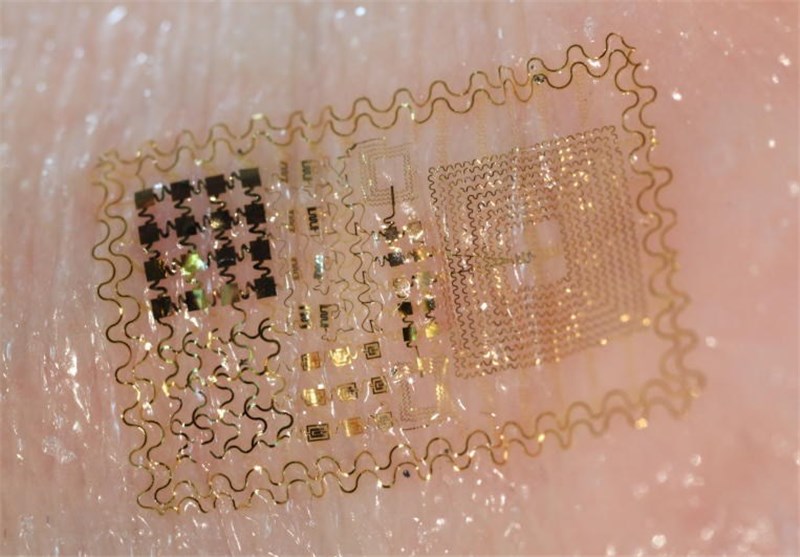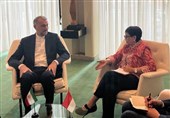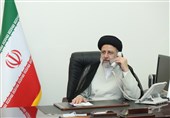Ultrathin 'Diagnostic Skin' Allows Continuous Patient Monitoring
TEHRAN (Tasnim) – A group of scientists have developed a sophisticated "electronic skin" that adheres non-invasively to human skin and provides a detailed temperature map of any surface of the body that could serve as early indicators of disease development and progression.
Taking the patient’s temperature has been part of medical practice for so long that we may see it as antiquated, with little value. However, the routine nature of the ritual belies the critical importance of obtaining accurate body temperature to assess the health of a patient.
Accordingly, a number of technologies have been developed to detect skin temperature changes that can serve as early indicators of disease development and progression. For example, sophisticated infrared digital cameras can detect, in high resolution, temperature changes across large areas of the body.
Now, an international multidisciplinary team including researchers at the University of Illinois at Urbana/Champaign and the National Institute of Biomedical Imaging and Bioengineering (NIBIB) has developed an entirely new approach: a sophisticated "electronic skin" that adheres non-invasively to human skin, conforms well to contours, and provides a detailed temperature map of any surface of the body.
The temperature sensor array is a variation of a novel technology, called "epidermal electronics," consisting of ultrathin, flexible skin-like arrays, which resemble a tattoo of a micro-circuit board. The arrays developed with NIBIB contain sensors and heating elements. The technology offers the potential for a wide range of diagnostic and therapeutic capabilities with little patient discomfort.
The researchers say the current version of the array that senses and delivers heat only hints at the vast possibilities for this technology. For example, in theory, any type of sensors can be included, such as sensors that reveal glucose levels, blood oxygen content, blood cell counts, or levels of a circulating medication. Also, instead of delivering heat, an element could be included in the circuit that delivers a medication, an essential micro-nutrient, or various stimuli to promote rapid wound healing. This ability to sense and deliver a wide range of stimuli makes the system useful for diagnostic, therapeutic and experimental purposes.
The technology has the potential to carry out such therapeutic and diagnostic functions while patients go about their daily business, with the data being delivered remotely via a cell phone to a physician -- saving the expense of obtaining the same diagnostic measurements, or performing the same therapeutic stimulus, in the clinic.
"We are very excited about the unique potential of this technology to vastly improve healthcare at multiple levels. Continuous monitoring outside of a hospital setting will be more convenient and cost-effective for patients. Additionally, access to data collected over extended periods, while a patient is going about a normal routine, should improve the practice of medicine by enabling physicians to adjust a treatment regimen '24/7' as needed,” Alexander Gorbach, Ph.D., one of the co-investigators from NIBIB, and head of the Infrared Imaging and Thermometry Unit, said.





